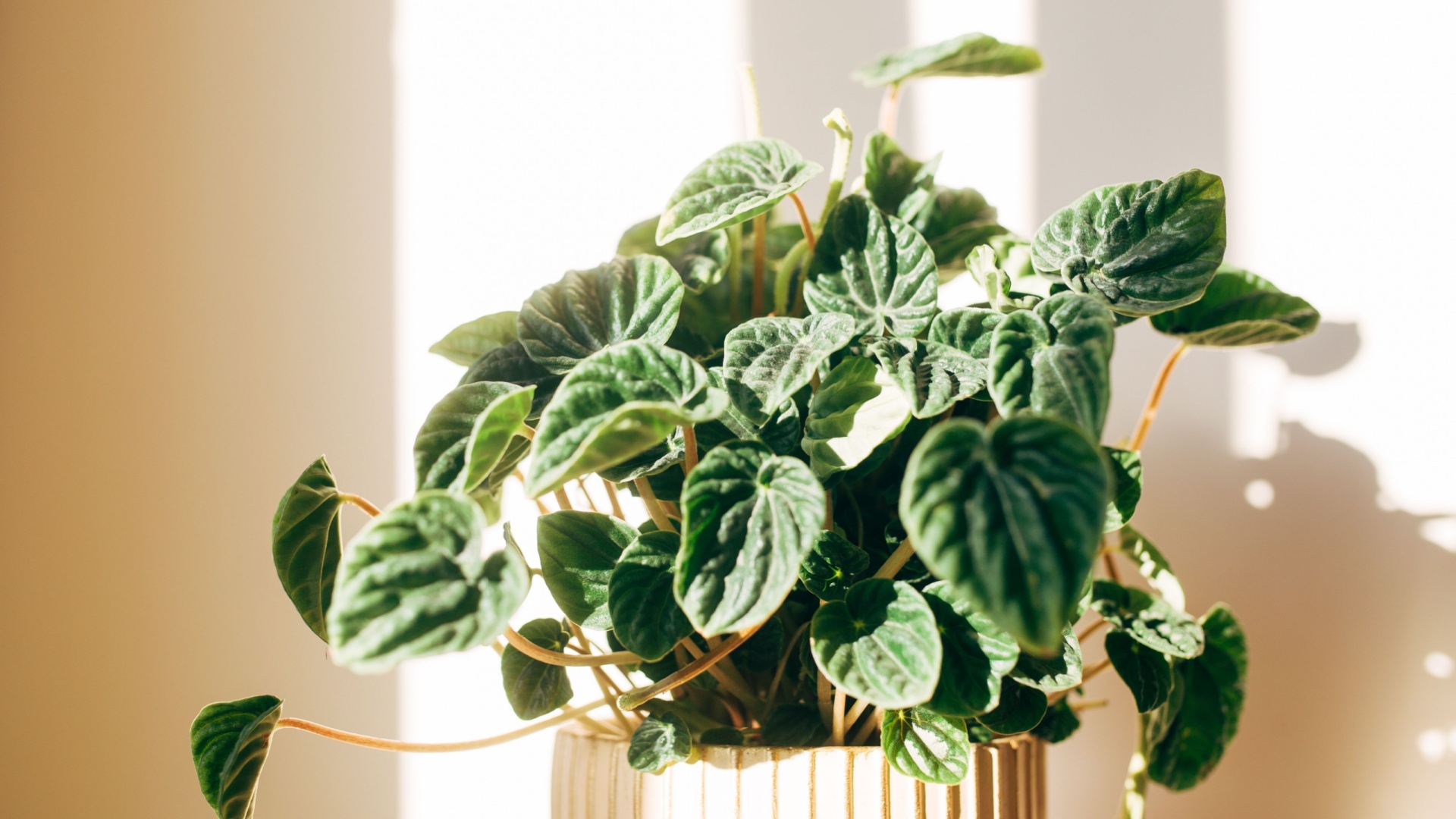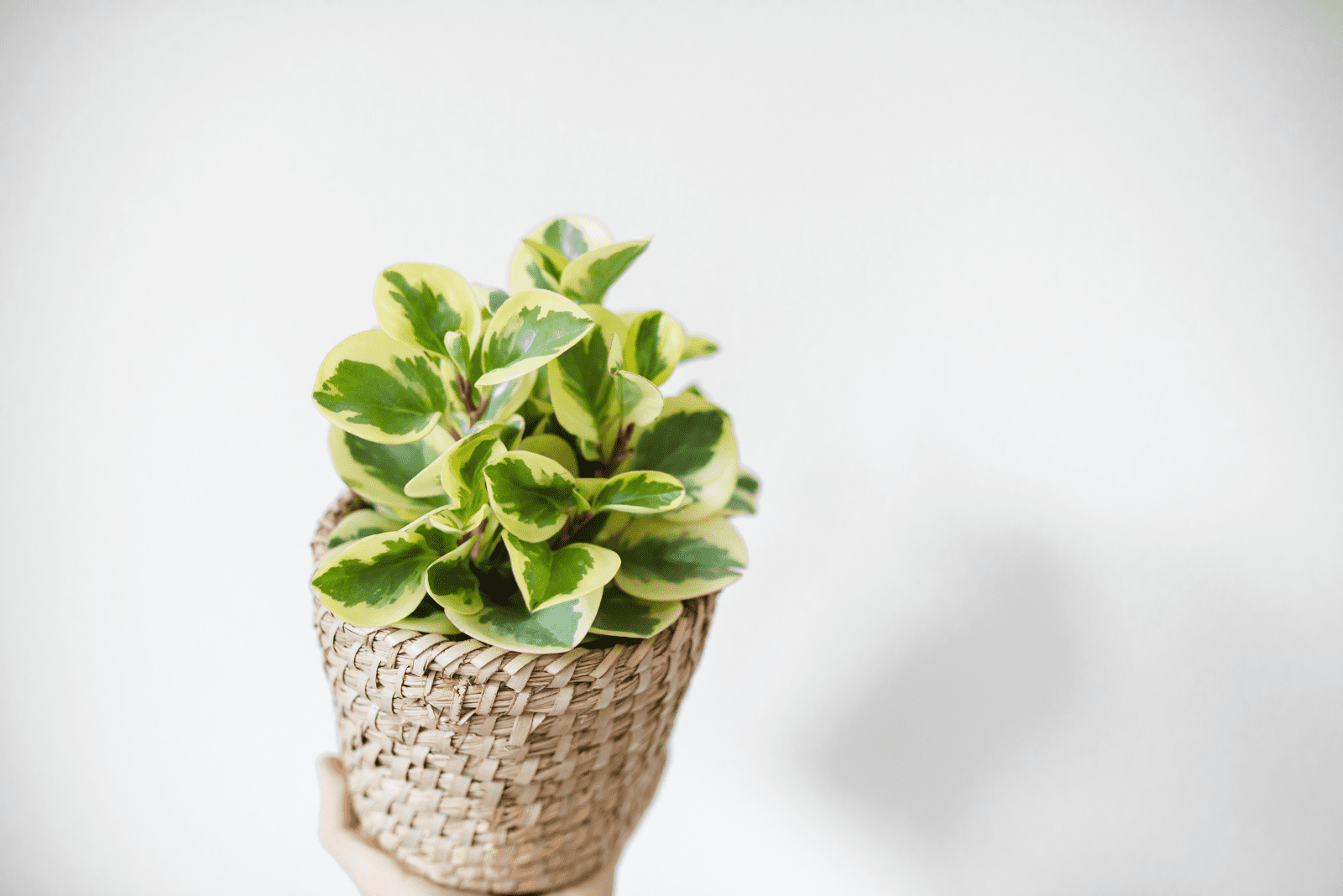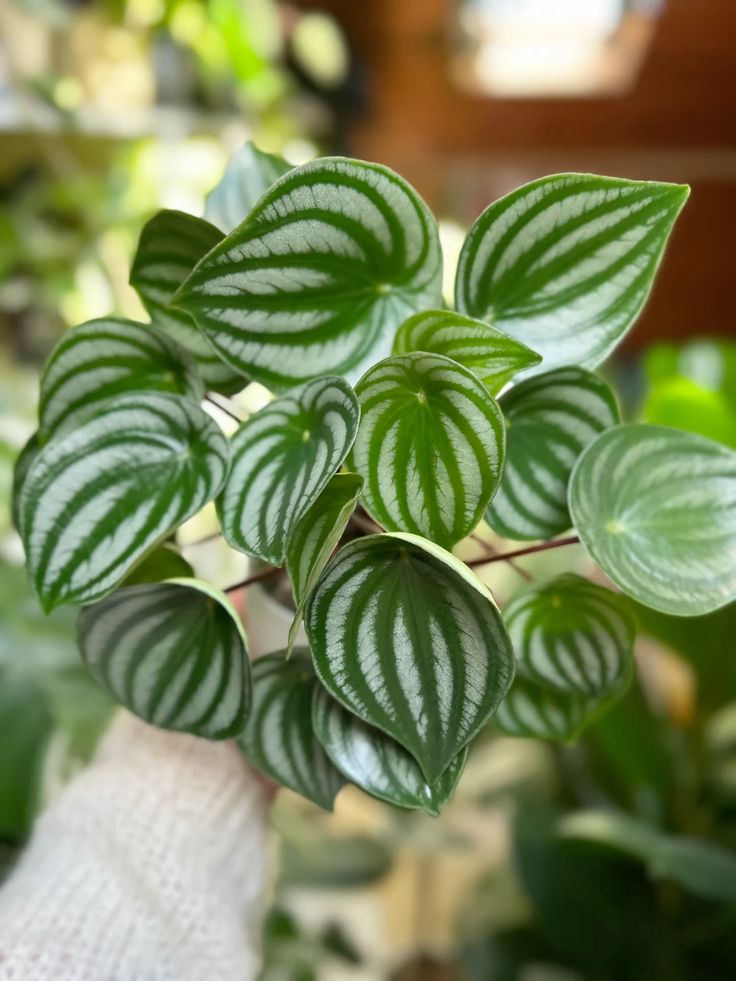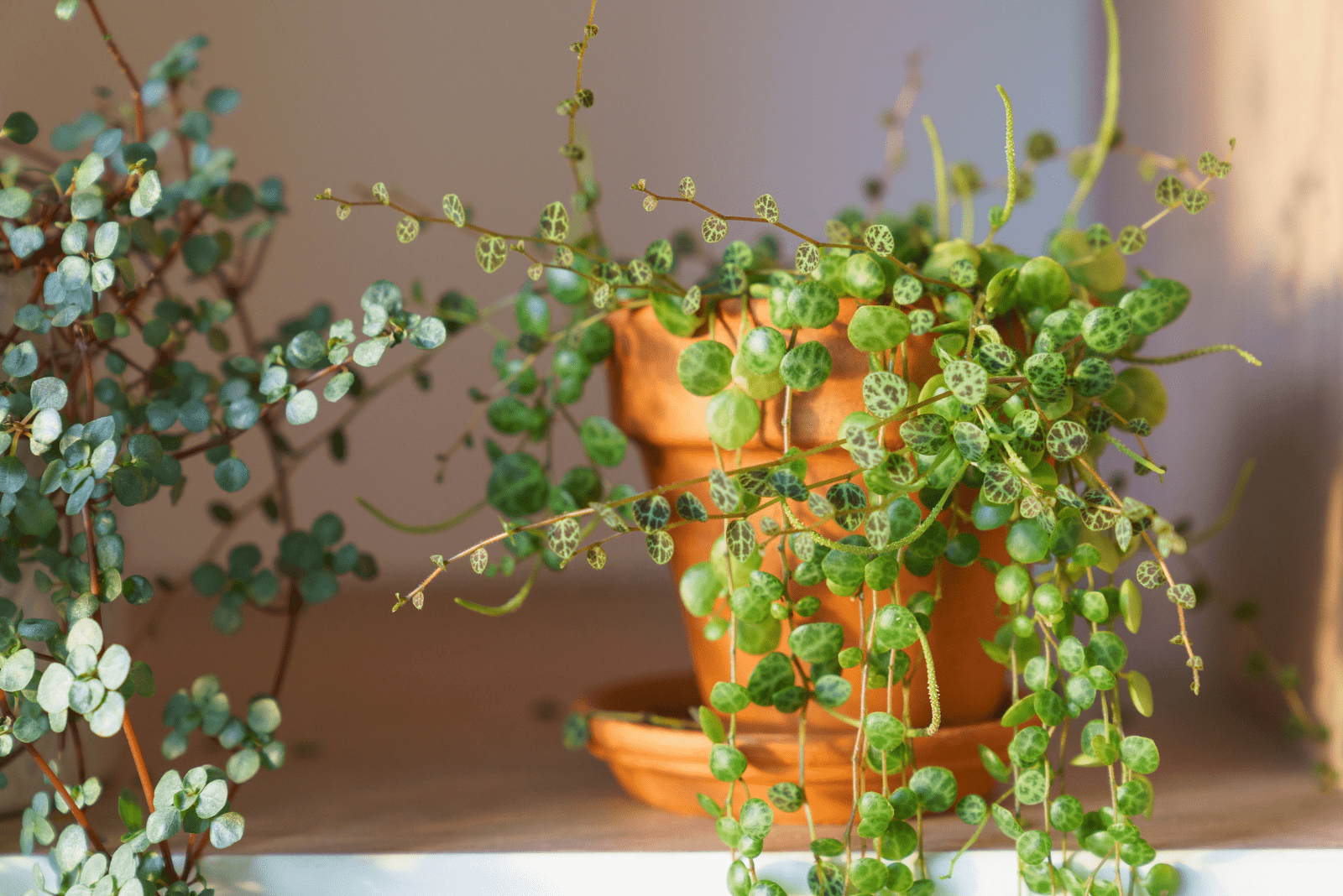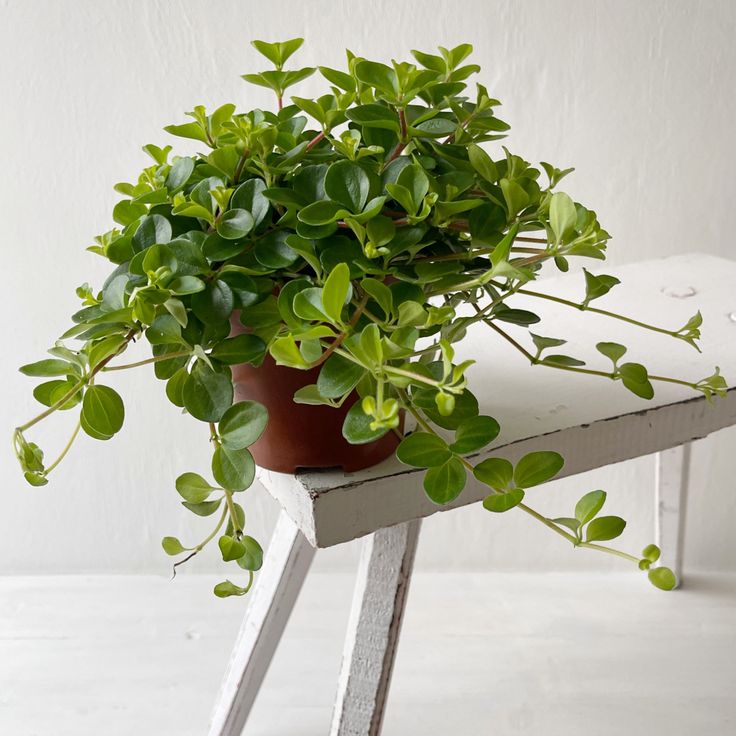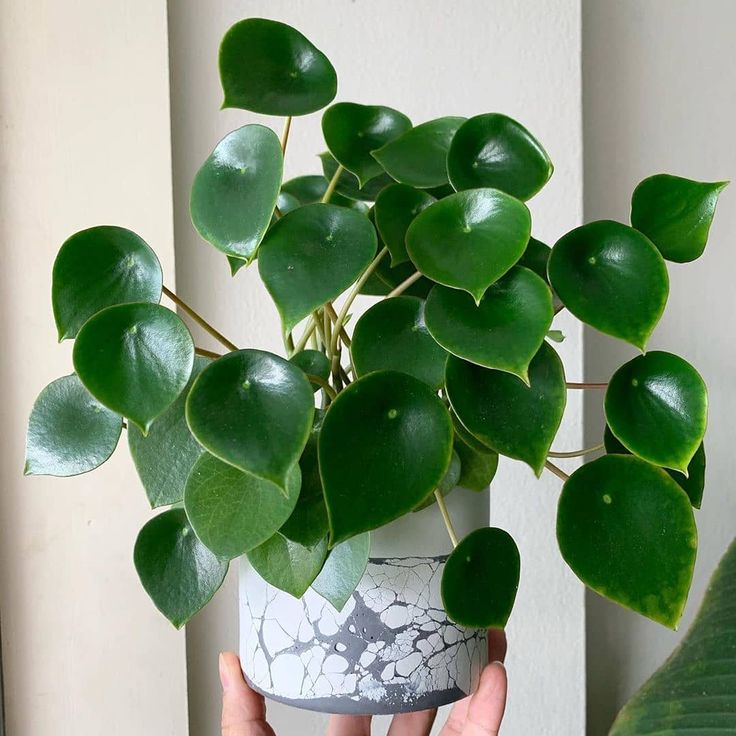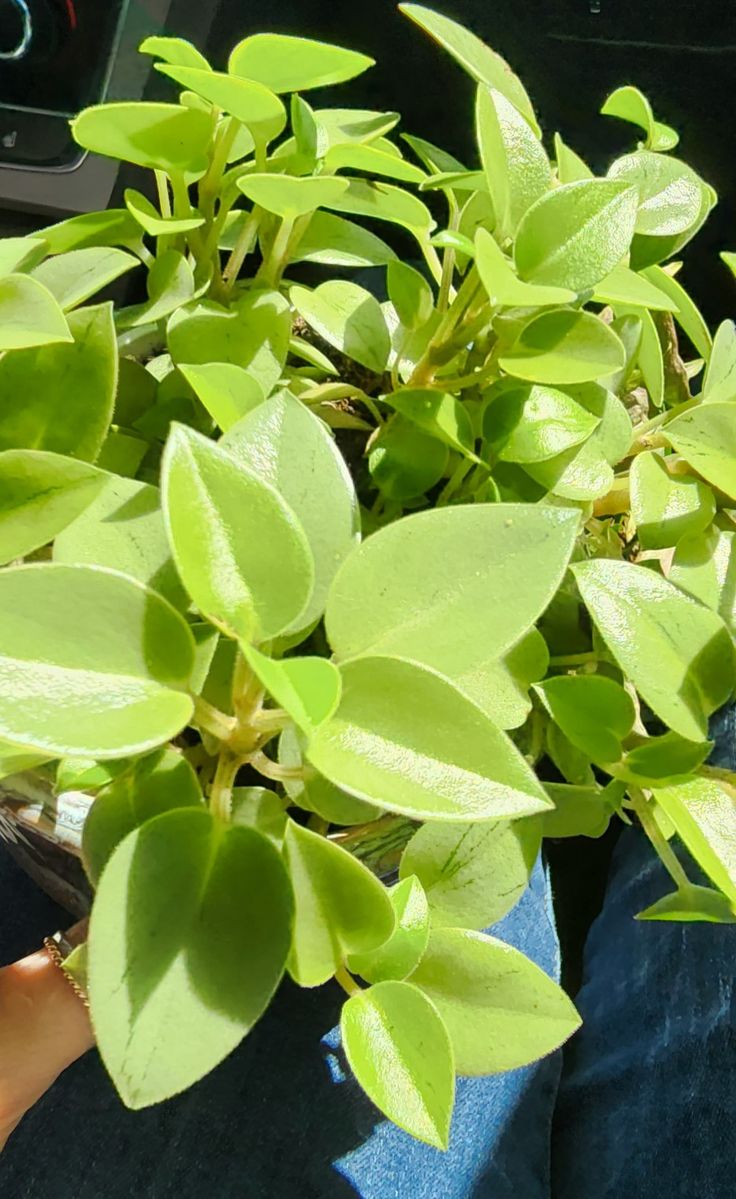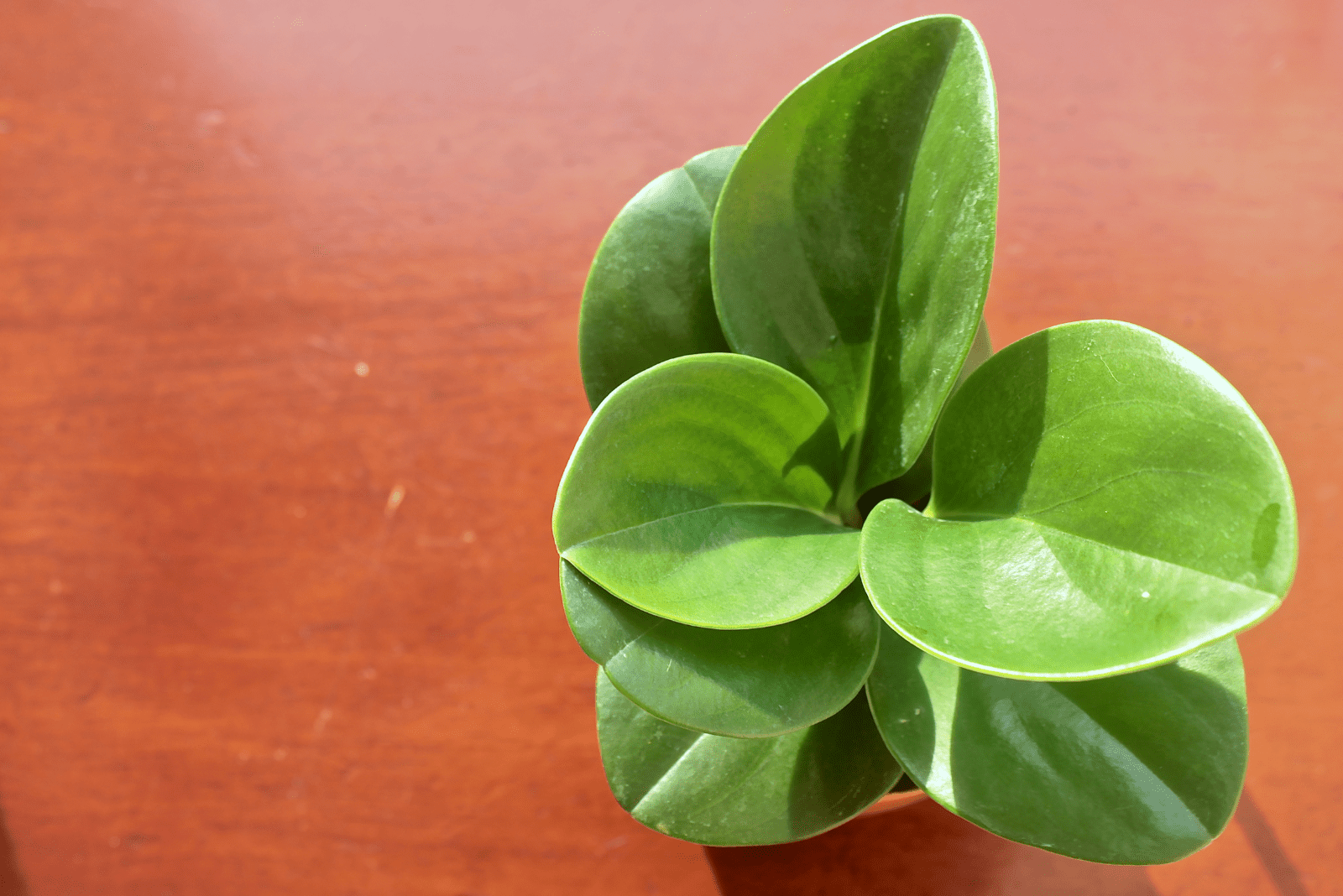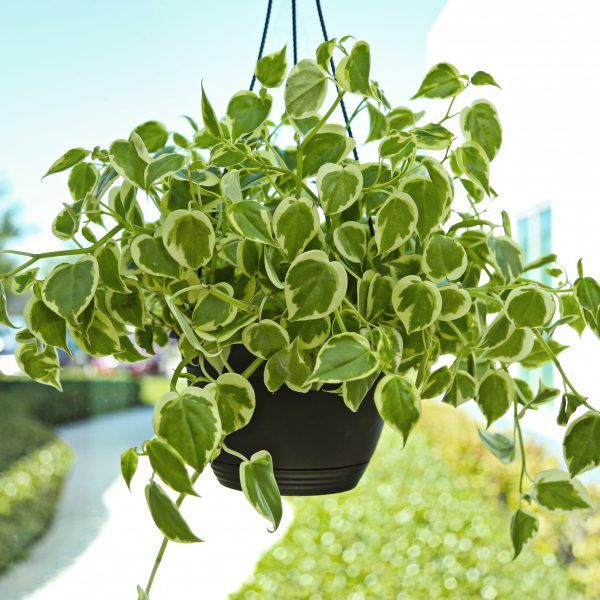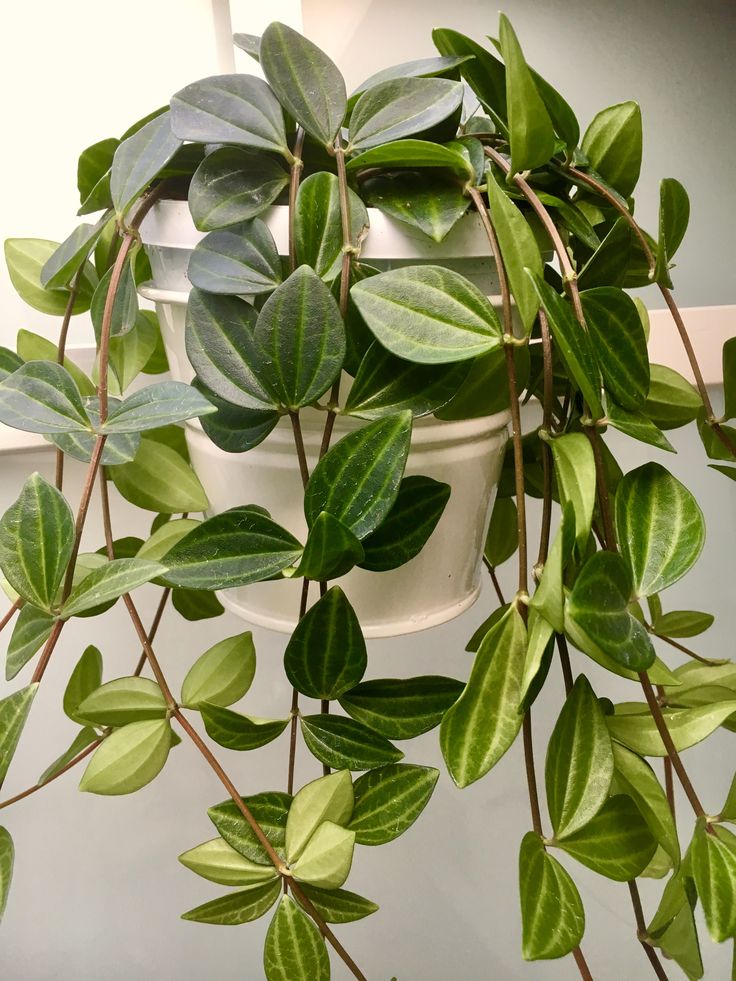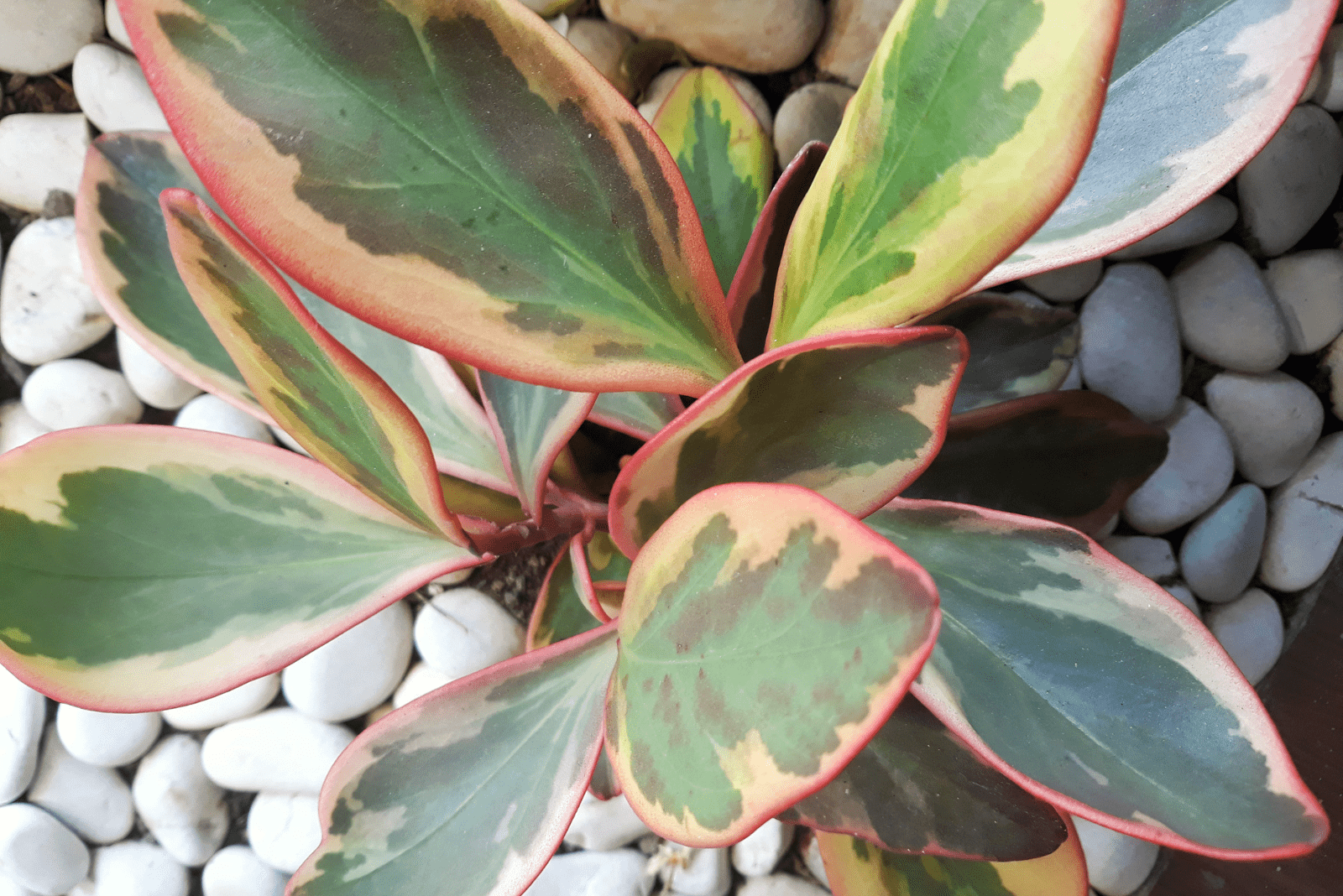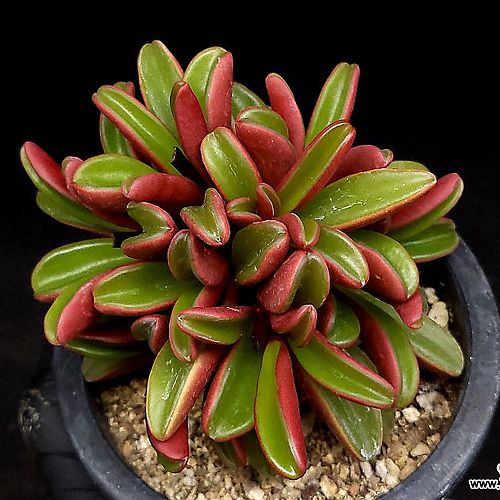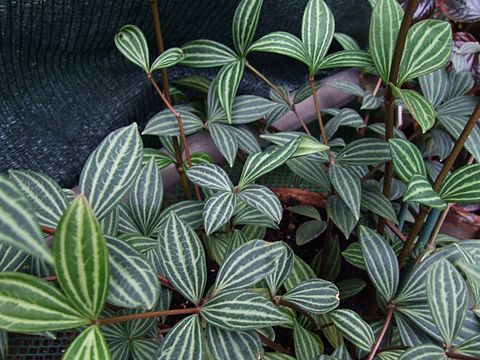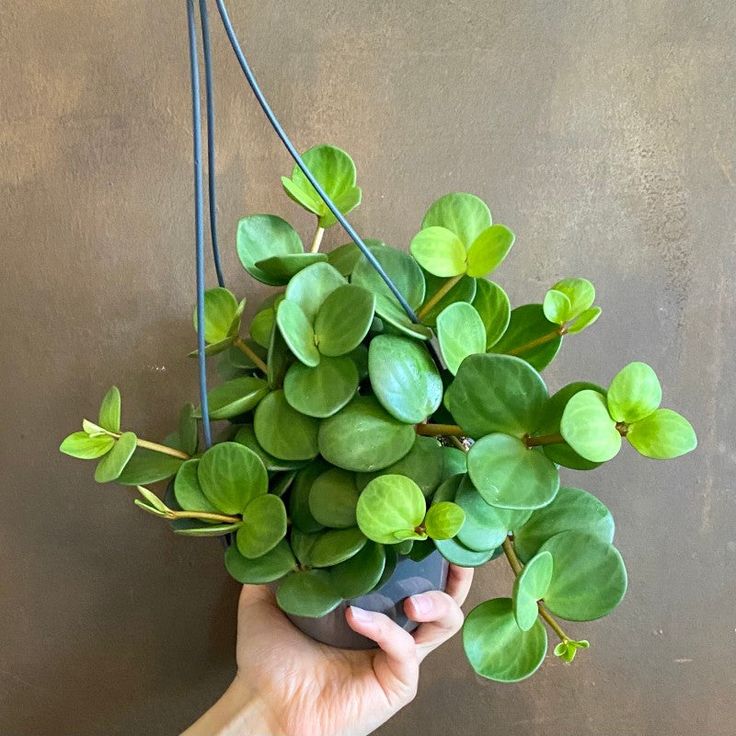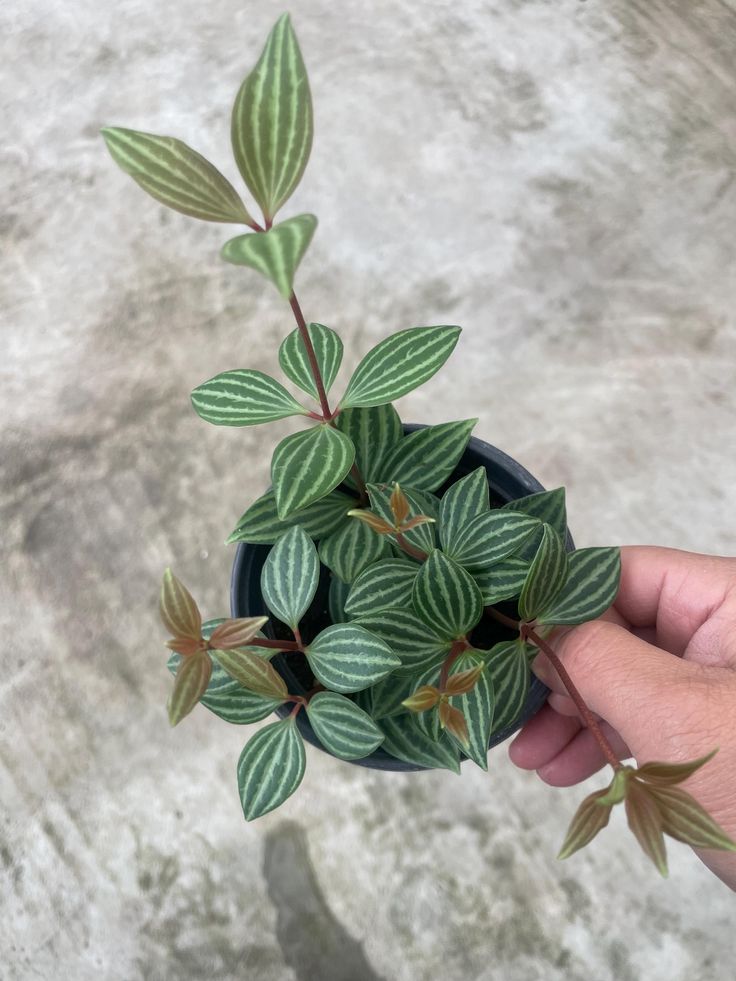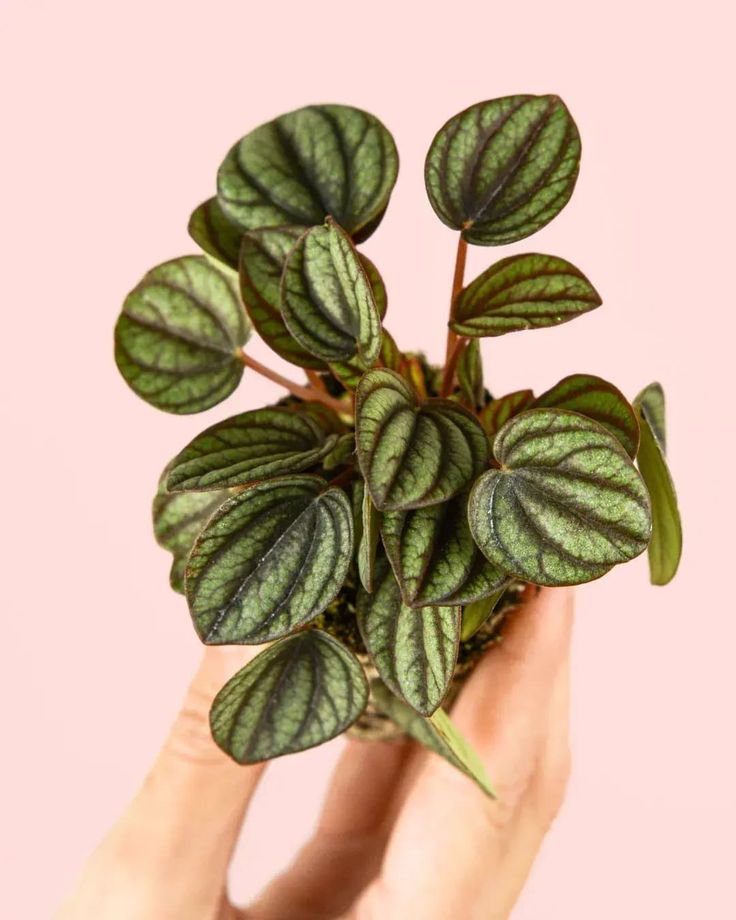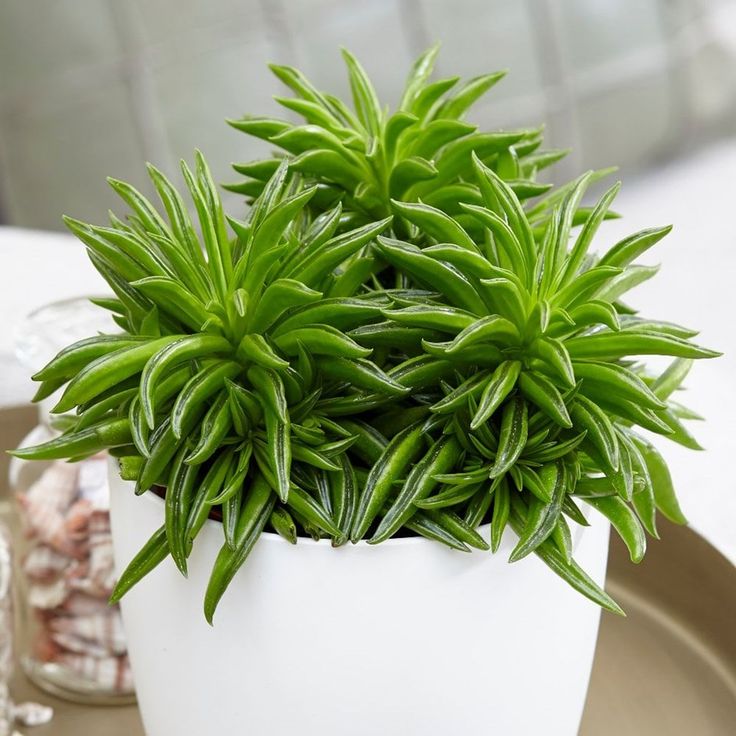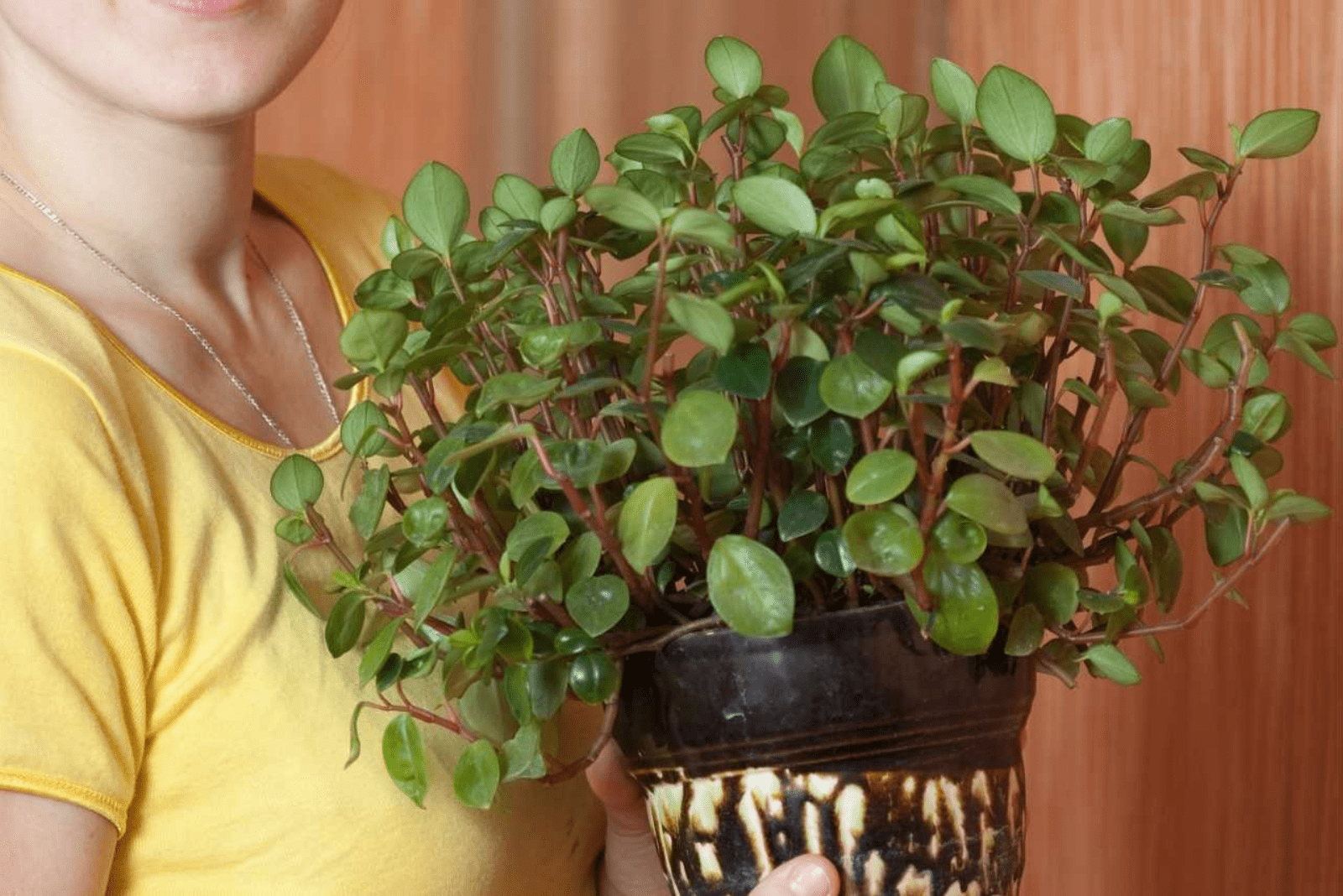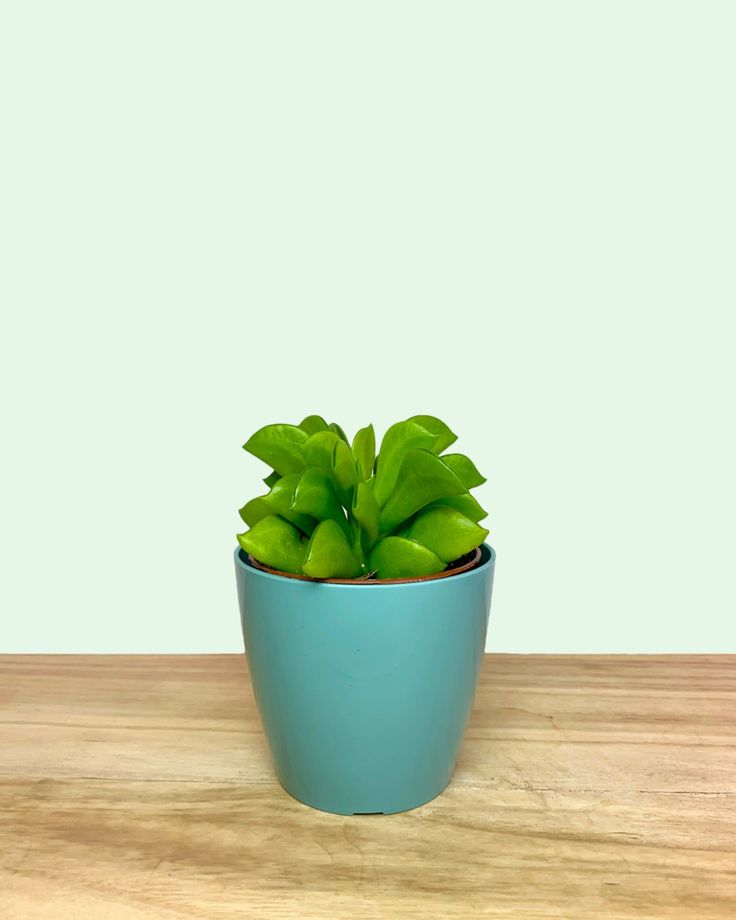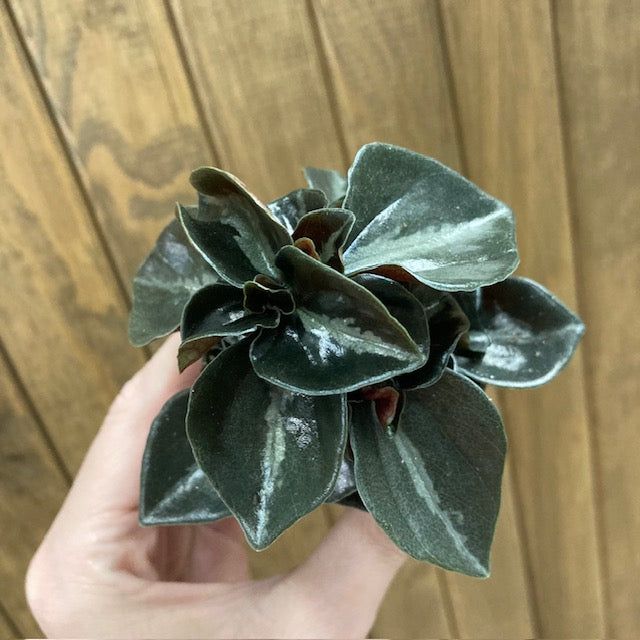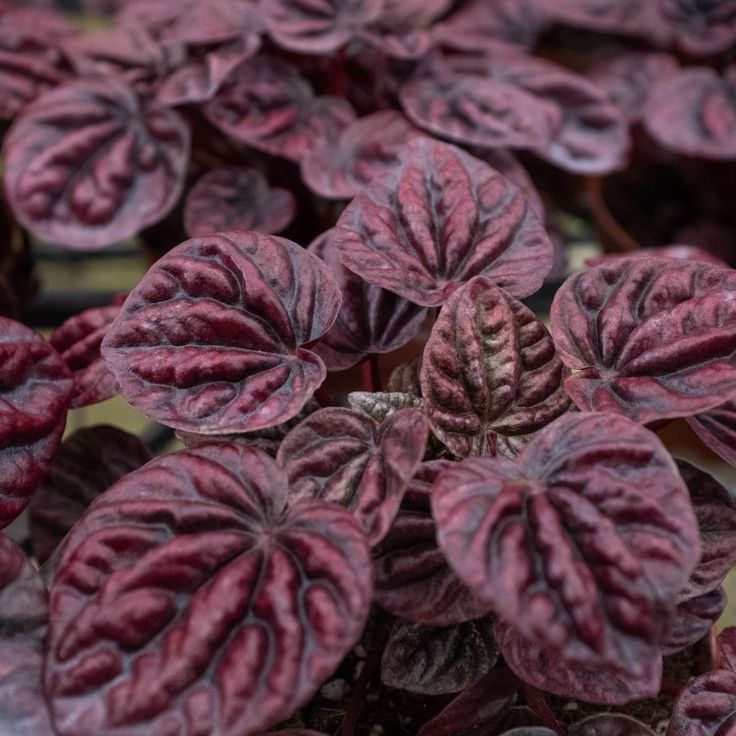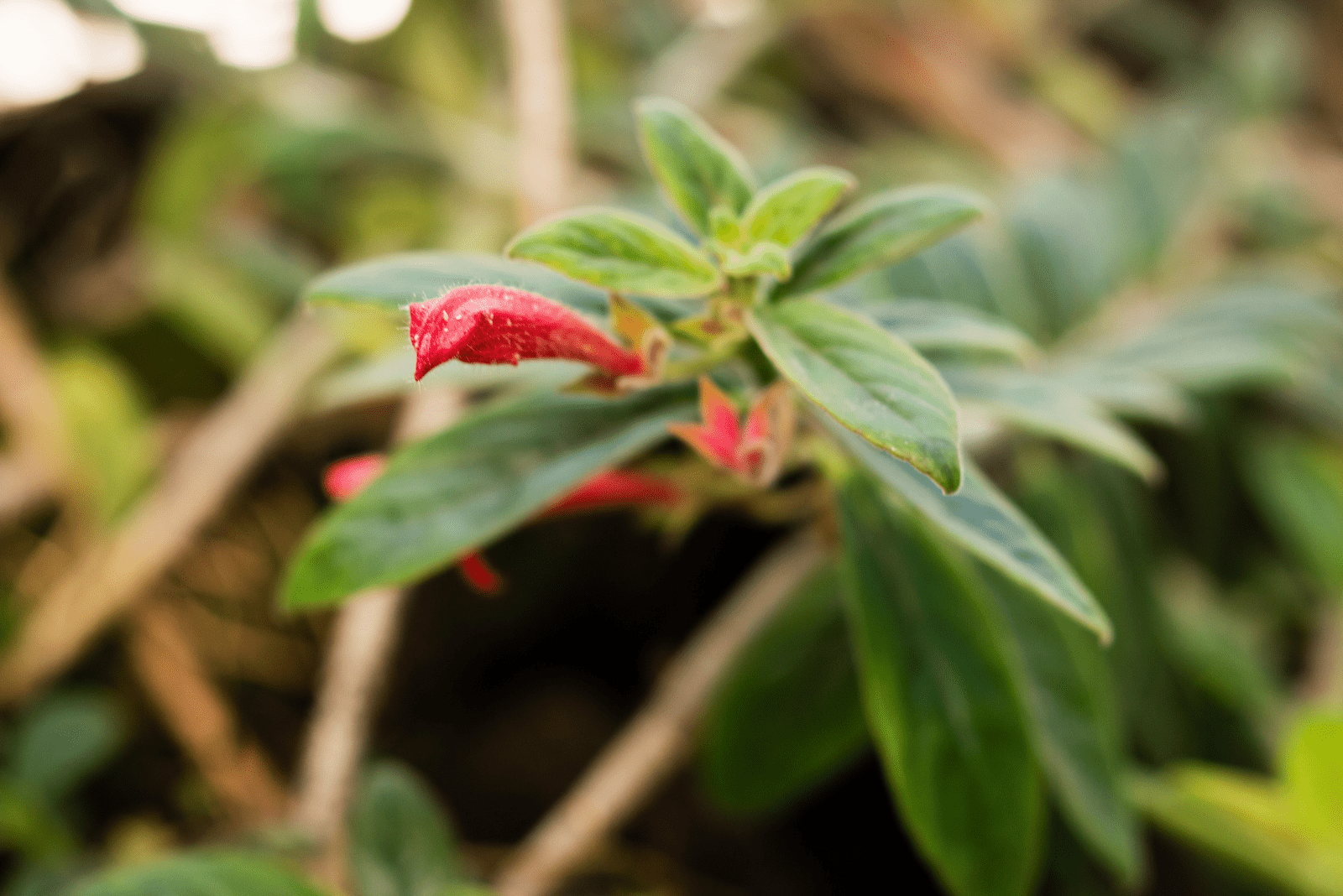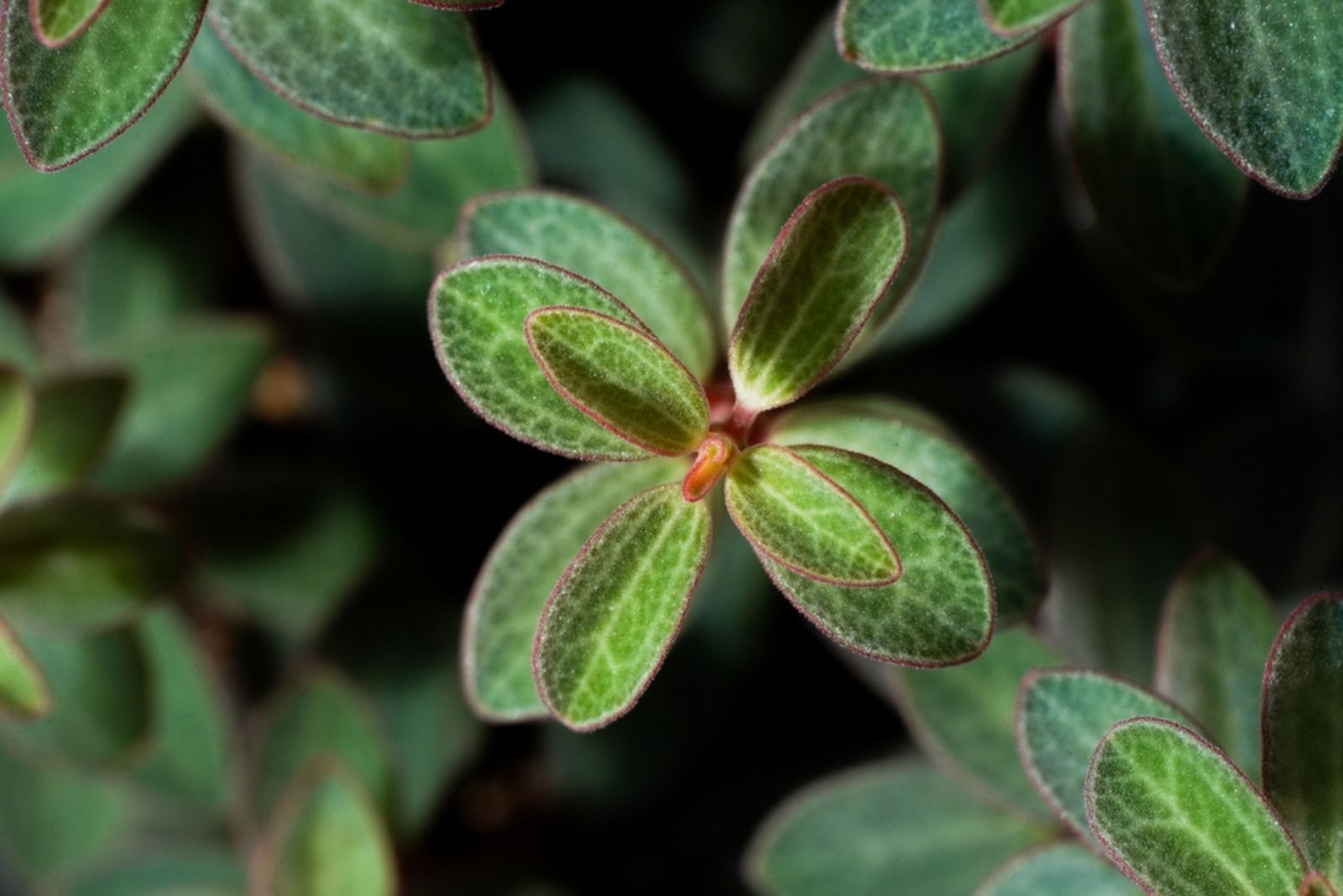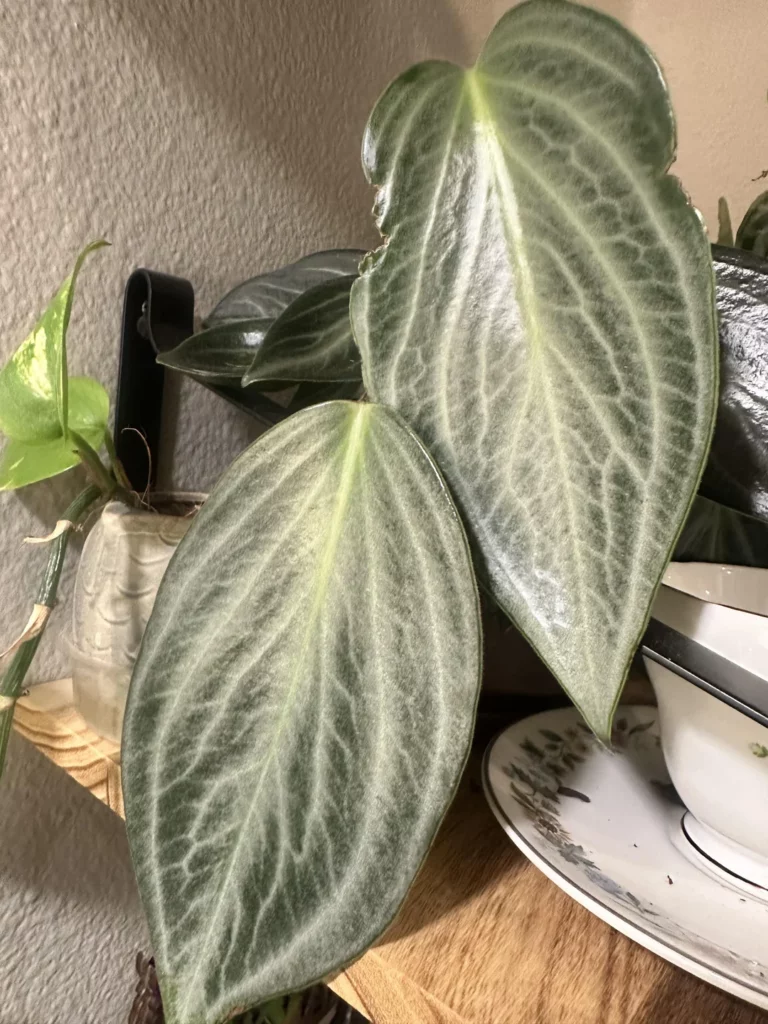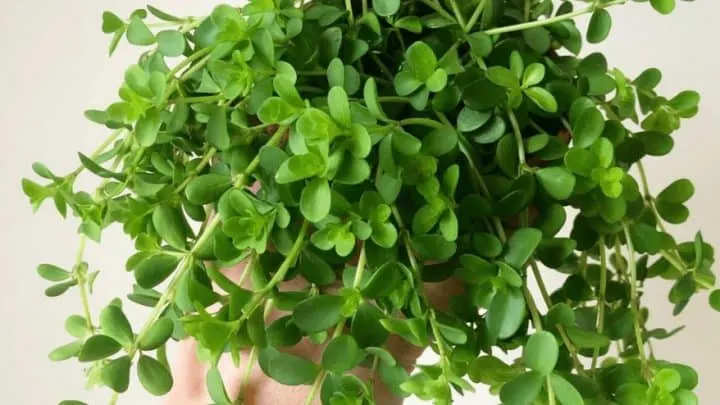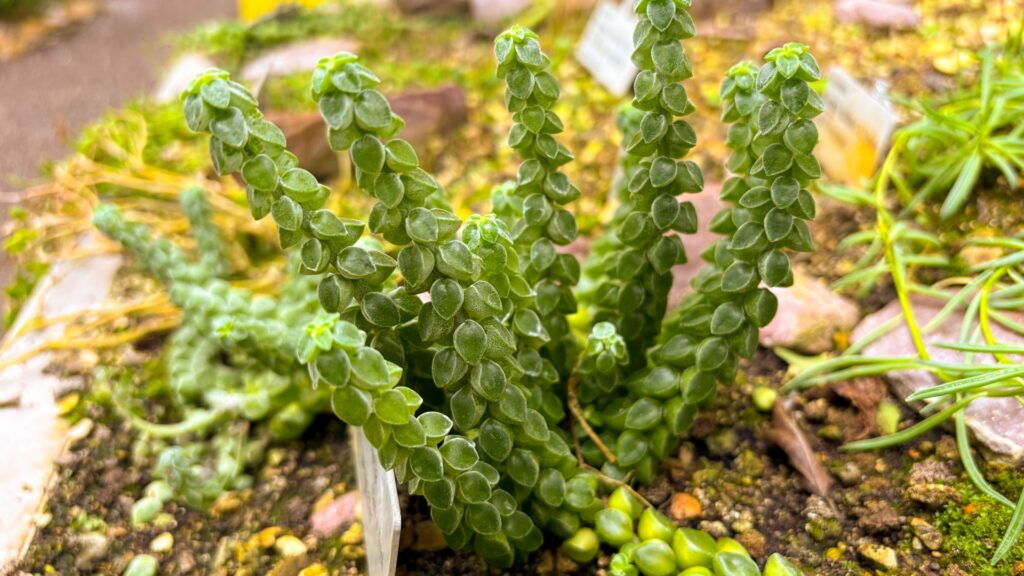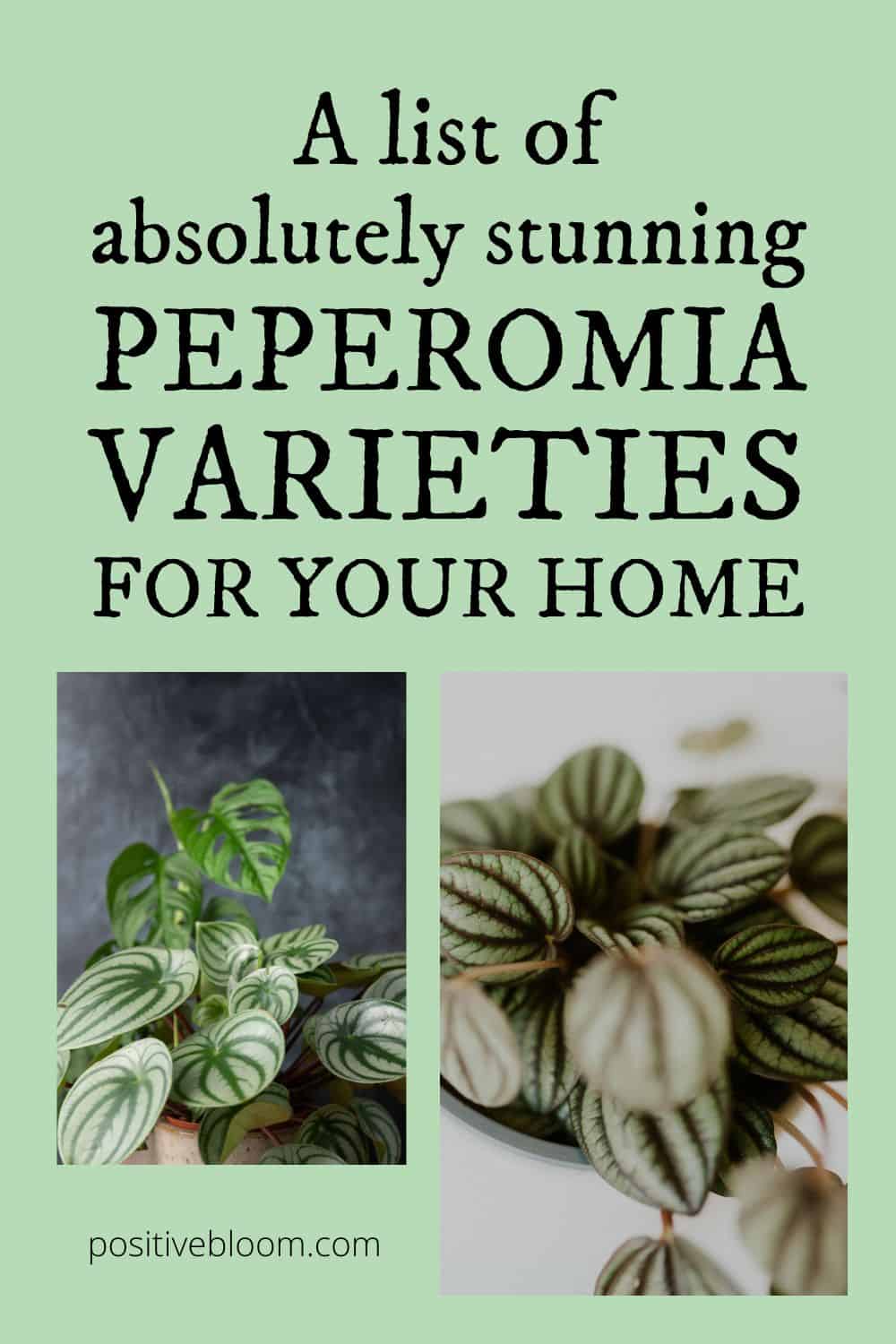Peperomias are all the rage these days—and for good reason! With their quirky charm and thick, textured leaves, these easygoing houseplants bring a splash of life to any space.
From heart-shaped to oval, light green to wildly variegated, each variety has its own personality. As semi-succulents, they’re low-maintenance and shy away from harsh sunlight, making them perfect indoor companions.
So, if you’ve got a green thumb (or just wish you did), dive into our list of stunning peperomia varieties and find the one that speaks to you. Let’s leaf through the best of the bunch!
1. Peperomia Obtusifolia
The Peperomia Obtusifolia, otherwise known as the Baby rubber plant, is a lovely plant that produces thick, dark green leaves that are usually rounded. Some of their cultivars have variegated leaves, which are usually creamy white or yellow, and are scattered all over the surface of the leaves.
They have glossy and smooth textures, which is why they are considered to be one of the most popular peperomia varieties out there!
This plant is ideal for all beginner gardeners because its care requirements are pretty basic. They require bright indirect light, though they can grow normally in low light conditions. However, you should be careful with watering because they are easily overwatered.
2. Peperomia Caperata
This unique species differs from the rest of them mainly because it produces stunning burgundy leaves that are highly detailed and textured. These beauties are often called Red ripples, though their cultivars are called Emerald Ripple Peperomia, Luna Red, Pink Lady, Moonlight, Napoli Nights, Frost, and Rosso.
The Peperomia Caperata is also semi-succulent, which means that their plant care guide is quite similar and undemanding. However, they like to be kept in high humidity. The peperomia is one of those aroids that blooms indoors.
Once you see a flowering peperomia in person, their long flower spikes no longer look like rat tails and instead look rather lovely. They can grow up to 2-3 inches (5-7.5 cm) long and are typically white or a light white-green color.
One of the key advantages of this peperomia is that it can actually lower the concentrations of formaldehyde, toluene, and other hazardous compounds in the air inside your home.
They are ideal desk centerpieces because they are small and compact, and they can also grow perfectly fine in various light conditions.
3. Peperomia Argyreia
The Peperomia Argyreia, commonly known as the Watermelon peperomia, is one of the most popular varieties out there. This is because their leaves look like tiny watermelons — they are absolutely adorable!
If you can’t paint the picture in your head, then just imagine glossy green leaves that have silvery-green patterns all over their surface. These patterns are equally placed, which is why they show a remarkable resemblance to watermelons.
However, the Watermelon peperomia is not as easy to take care of. For instance, they are prone to overwatering, which is why you always have to check the soil before watering. If the top few inches of the soil have dried out, then you can water it.
Read also: How And When To Propagate Watermelon Peperomia
4. Peperomia Prostrata
The Peperomia Prostrata, otherwise known as the String of turtles, is a trailing peperomia variety that produces cascading foliage that usually has a round shape. These lovely little leaves are compact, green, and shiny. The most famous cultivar is a variegated type that produces leaves with unique mottling on their surface and resembles turtles (hence the name!).
When this vining plant is grown in a hanging basket, it looks like tiny, cute turtles are trying to climb up. It is also great for shelves, desks, and dish gardens.
Another thing that makes this plant even more beautiful are its lovely red stems, which add a great pop of color to any room!
The Peperomia Prostrata is not a fast grower, so you won’t have to worry about repotting every growing season. It thrives in bright indirect light and needs frequent watering. It is very sensitive to temperature fluctuations — if you keep changing the plant’s location or keep it near any vents or windows, it will most likely have droopy leaves.
5. Peperomia Rotundifolia
Here is yet another adorable vining plant!
The Peperomia Rotundifolia produces small round leaves that look like tiny buttons. These leaves have a shiny texture and subtle, light veining. Their growth habits vary — the stems grow upright when short, and these upright stems will create a full, bushy pot if planted with multiple specimens and kept trimmed.
If allowed to grow long, the stems will trail from the pot and gradually intertwine to form a thick drape, creating a bushy appearance.
These plants are epiphytes, which means they can grow on other plants or objects, so they have a pretty easy care guide. They thrive in partial shade and well-draining soil. You should mist your plant regularly if you decide to grow it in a hanging basket.
Another interesting thing is that this plant is astonishingly similar to the Jade plant, which is why the Peperomia Rotundifolia is often called Trailing Jade or Jade Necklace. Nonetheless, this plant is cute as a button and will definitely make your room look more lively!
6. Peperomia Polybotrya
We are now looking at a plant that looks nothing like the previous ones. It’s even hard to tell that they are from the same species!
With their lovely, deep green, and teardrop-shaped leaves, these plants make a great addition to any home or garden. Their waxy leaves are attached to sturdy stems, and they grow quite large, which is kind of unusual for Peperomia plants! They grow about 30 inches tall and 4 inches wide.
This species is commonly called the Raindrop peperomia, mainly because of their unique leaf shape, though it is also referred to as the Coin-leaf peperomia.
Even though they have a tropical appearance, these plants don’t enjoy moist soil as other tropical plants do. These are also epiphytes that require well-draining and loose soil. They need bright, indirect light to keep their leaves looking vibrant and lush.
If grown in low-light conditions, it might appear leggy. If this happens, you can simply prune the leggy stems (but make sure to do it in the springtime at the beginning of the growing season).
7. Peperomia Orba
The Peperomia Orba, commonly known as the Teardrop peperomia, is a small peperomia variety that produces green foliage all year round!
The intensity of the green color varies upon the cultivar, though they usually produce light green leaves. Some varieties even have yellow to creamy-white variegations on the margins of the leaves. As the plant matures, there is a distinctive white line in the center of the leaves.
This Peperomia variety is probably the cheapest one, and they are quite easy to find (you can find it in most garden shops and markets). They are small, don’t take up much space, and are quite easy to take care of — but be careful with watering!
The most common cultivars include Variegata, Astrid, and Pixie Lime.
8. Peperomia Incana
The Peperomia Incana, also known as the Felted Pepperface, is a unique variety that looks like a small tropical tree!
It produces light green, velvety leaves that have a round shape, and both leaves and stems are covered with pelt-like fuzz, which under certain lighting conditions gives the plant a distinctive white shine.
All of this fuzziness makes this plant really special, and you might even want to pet it (but don’t be too harsh!).
These plants should not be kept in direct sunlight because they can easily get sunburned (and you don’t want to cause any damage to those lovely leaves). Therefore, keeping them in bright light is the best way to go, although they can tolerate low light conditions as well.
This plant is not usually found in local shops like the previous varieties, although you can find them online on Amazon or Etsy.
9. Peperomia Serpens
Peperomia Serpens is a perky, vining Peperomia variety that often gets mistaken for a Philodendron. In fact, another name for this variety is False Philodendron due to its remarkable resemblance to this species.
It produces small, heart-shaped leaves that can be entirely green or have some yellow or creamy white variegations (this depends on the cultivar). Because of the lovely shape of their leaves, these plants are also called Cupid Peperomias.
I know, that’s a lot of names for one plant!
This plant can brighten up any room, and they are perfect for succulent terrariums and hanging containers.
10. Peperomia Quadrangularis
There are many different names for Peperomia quadrangularis. Peperomia angulata is its other scientific name, although its more well-known common names include the Radiator plant and Beetle Peperomia.
Even though these precious plants are found on trees in the Amazon rainforest, they are also successfully cultivated indoors (plus they are pretty cheap!). The Angulata‘s most noticeable characteristic is its leaves. The dark green, fleshy leaves are striped with lines that are almost golden.
The undetectable, long, and thin blooms are occasionally hidden by the oval foliage, but when we take a look at the gorgeous leaves, these flowers aren’t even worth mentioning. This plant grows vigorously, and it will definitely take your breath away!
They are not even hard to take care of! A Beetle peperomia requires only basic plant care; a well-draining soil mixture, some water, and indirect sunlight is all it needs for optimal growth.
11. Peperomia Verticillata
Here is yet another plant that produces beautiful, red leaves!
The Peperomia Verticillata, otherwise known as the Belly Button Peperomia or Red Log Peperomia, is yet another attractive peperomia variety that produces fuzzy leaves. Each cluster of the plant’s four fuzzy, tiny, oval leaves has a stem that develops upright and eventually sags under its own weight.
What makes this plant unique is that they produce green leaves with a red color on the underside (this color-combo looks so cool!), and they grow quite a lot larger than other peperomia species.
Their growth habit depends on the provided conditions. For instance, if they grow in low light, it’s most likely that this plant will develop into a hanging plant with long trailing stems. However, if they are grown in bright light and are pruned regularly, then they will form two-toned bushes.
Even though they are succulents, these plants don’t enjoy humid environments. They can be picky when it comes to watering as well, so make sure not to give them too much water.
Read also: Do Succulents Like Humidity? It’s Time To Find Out
12. Peperomia Clusiifolia
Let’s continue talking about Peperomia plants that produce reddish leaves. The Peperomia Clusiifolia, also known as Ginny Peperomia, Jelly, and Tricolor Peperomia, is a type of houseplant that produces differently colored leaves, which can vary from green, pink, creamy, and red.
This beauty also produces long and wavy leaves, which makes it look even more mesmerizing. Different cultivars might have variegations, though most of them produce green leaves with reddish edges, which is how they got another name — the Red Edge Peperomia!
If you are more into minimalistic home decor with a monochromatic color scheme, then this plant might not be ideal for you. Some folks are also not a fan of their wavy leaves, though I think that this makes them even more beautiful!
The Tricolor peperomia is also great for beginner gardeners because it doesn’t require any special plant care. The most important thing is to keep the plant somewhere with indirect and bright light.
13. Peperomia Graveolens
We are still talking about varieties of peperomia that produce red-colored leaves, so if this is not your style you should skip to the next one!
The Peperomia Graveolens has similar leaves to the Peperomia Verticillata, which are green on the surface and red on the undersides. The only difference is that their leaves are pretty narrow and thick compared to the Verticillata species.
This Peperomia is often referred to as a Ruby Glow plant, and it has distinctive succulent features. When it comes to plant care, there isn’t much fuss, although you should be careful when watering because it is prone to root rot (a fungal disease that can kill your plant).
What’s interesting is that the word “graveolens” actually means bad-smelling, and they got this name due to the rat-tailed leaves that have an earthy odor. Don’t worry, though, because this plant won’t stink up your room — it is only stinky when you put your nose really close to the hidden flowers.
14. Peperomia Tetragona
The Tetragona Peperomia is a beautiful hanging plant that produces lovely, almond-shaped leaves with prominent white vines that contrast the green-colored background.
This plant is also called the Parallel Peperomia because of its parallel leaves and overall precise appearance. They also produce sturdy, long stems that have an orange tone — great for a subtle pop of color!
Plant care is also not demanding, and though they thrive in high humidity, these plants can easily adapt to medium humidity levels. They like bright light, but can also grow perfectly well in low light conditions.
The Parallel Peperomia is usually grown as a hanging plant, though you can prune it regularly to maintain its bushy appearance.
15. Peperomia Hope
This plant is tiny and absolutely adorable!
It is made by crossing a Peperomia Quadrifolia with a Peperomia Deppeana, which are both eye-catching beauties! The Peperomia Hope is similar to its parents — it has vining features, and its small, fleshy leaves grow in groups of four.
They are also referred to as Peperomia Tetraphylla — Tetraphylla is a Latin word that means “four leaves”.
This variety grows up to 8 inches long, which makes it a perfect desk plant in small rooms and tight places. It is also a slow-growing plant, so you won’t have to worry about repotting it!
I think this is a great plant to gift to your friends, especially if they’ve had some awkward situations on first dates — you can just say “have some hope” and give them a Peperomia plant!
16. Peperomia Rana Verde
This peperomia is a hybrid plant made by crossing a male and female Albovittata. Since its initial crossing in the Netherlands in 2012, it has made its way into homes all over the world. The Chinese rubber plant, rippling Chinese money plant, and rippled peperomia are other names for the Peperomia Rana Verde plant.
This lovely money plant’s stem, which can have up to 16 heart-shaped leaves on it, enjoys branching out. Leaves are roughly 3 inches in size. The foliage of this plant has an intriguing feature; the upper side is glossy and the lower side is matte!
In contrast to the foliage, the flowers are remarkably understated. They are orange and only appear in the summer. You can easily miss them because they are odorless and less than an inch in size. This plant is low maintenance, which is fantastic because it means you can skip a few days of watering it if you have a hectic schedule.
17. Peperomia Puteolata
This peperomia variety looks quite similar to the Watermelon peperomia because it produces dark-green leaves that have silvery stripes on the surface. However, the leaves are not rounded — they are usually narrow with pointy leaf tips.
These plants also have reddish stems and are fast-growing, which is not as common among peperomia species.
It grows from 10 to 18 inches tall, and the cascading, vibrant green foliage with silvery stripes looks absolutely beautiful on shelves or hanging baskets. As with all other peperomias, be careful with watering and only water the plant when the soil has dried out.
18. Peperomia Albovittata
If you want a subtle pop of color in your room, the Peperomia Albovittata is the plant for you!
With their stunning green leaves that have prominent red veins protruding on their surface, you won’t be able to take your eyes off of this plant. Tan to rose hues can be seen on the tall, upright petioles.
When it comes to plant care, it can adapt to low light conditions and moderate humidity levels, though they thrive in bright indirect light and high humidity. Pick a location that does not get a lot of traffic because the stems are extremely fragile and can break easily.
The common name for this variety is Peacock Peperomia, and one of their popular cultivars is Piccolo Banda, which looks quite similar to the Watermelon Peperomia but with smaller leaves, and Rana Verde, which we previously discussed.
19. Peperomia Ferreyrae
The Peperomia Ferreyrae looks like tiny palm trees growing in a small pot!
It produces narrow and long light green leaves that usually grow in clusters, which is why they resemble palm fronds — there is nothing cuter than growing tiny palm trees on your desk!
The Peperomia Ferreyrae is also called the Happy Bean Peperomia, and it can grow from four to twelve inches tall. This plant doesn’t require high humidity levels, and you won’t have to worry about repotting as it isn’t a fast grower.
Make sure to keep the plant in well-draining and porous soil, and water it once the soil dries out to keep your Happy Bean happy!
20. Ruby Cascade Peperomia
This is another fast-growing peperomia variety, so if you are not a fan of repotting then you should skip to the next one!
This fast-growing stem plant has small, spherical leaves that are green on top and red-hued below, which makes it a vibrant and eye-catching hanging plant. These are also the plants that produce the longest trailing stems or vines.
It can grow just fine in low light, though it usually stretches its long vines. It looks its very best when kept in bright indirect light. Never expose these plants to direct sunlight as they can be easily damaged.
This variety is quite popular in North America, though its lineage is not documented so we aren’t really sure whether this is a hybrid plant or if it originated from a tropical region.
21. Peperomia Dolabriformis
This plant also looks like tiny, compact palm trees — they even have semi-woody stems!
The Peperomia Dolabriformis, also known as the Prayer Peperomia, originates from the Peruvian Andes, where it grows as an epiphyte.
This is one of the rare varieties that actually doesn’t enjoy bright indirect sunlight. The leaves only have a little translucent space to absorb light, and are fashioned with opaque lips to block sunlight.
Handle them like a true succulent by keeping them in dry conditions and watering them only every now and then.
22. Peperomia Metallica
The Peperomia Metallica produces tiny, dark green to almost black leaves that are round in shape and have a glossy texture. The distinctive burgundy color on the underside of the leaves absolutely steals the show!
This peperomia variety has a bushier appearance compared to others, and they thrive in medium lighting.
It is also a small variety that can grow up to 8 inches tall, so it can be either grown as a desktop plant or you can put it on a shelf!
The Metallica enjoys average humidity, though some smaller cultivars might require higher humidity levels.
The most trendy cultivar is called the Peperomia Metallica Colombiana, which has tri-colored leaves; red on the underside, green on the surface, and a silvery/metallic stripe down the center of the leaves.
23. Burgundy Ripple Peperomia
If you want to grow black houseplants, then add the Burgundy Ripple Peperomia to your wishlist!
This peperomia’s ruby leaves do indeed resemble the kind of plant that would grow in a court or palace. The fact that they are not toxic to pets makes them much more appealing! Although this plant also produces delicate, white-green blooms, their importance is overshadowed by the magnificent dark leaves.
The ideal light for this peperomia is indirect and bright light, although it can adjust to low lighting. An east-facing windowsill would be the ideal place for this plant. Avoid exposing it to direct sunlight because doing so could damage its wonderful foliage.
Water the plant when the soil dries out (I usually water mine three times a month), and keep it in temperatures between 60 to 80 degrees Fahrenheit.
24. Peperomia Perciliata
This small variety produces fuzzy, heart-shaped leaves that have a beautiful, intense green color. The leaves look great in combination with the red stems. This is a hanging plant that grows vigorously. In many cases, the stems can range naturally and create a perfect ground cover.
The Peperomia Perciliata is special because it produces absolutely stunning flowers during the growing season (many varieties of Peperomia produce undesirable flowers that stay hidden under the foliage).
This is not the case with this species because it produces beautiful white flowers that have a very pleasant fragrance.
What’s also interesting is that this species is endemic in Panama and Colombia, though it is grown regularly as a houseplant. This variety requires regular Peperomia care — they don’t mind high humidity and require well-draining soil.
25. Peperomia Kimnachii
This rare peperomia species produces long green leaves that grow in upright clusters around the leaf nodes. There is a prominent red tint on the stems around each leaf node, while the stems are usually bright at the top and slowly turn into a darker color around the base of the plant.
Even though it is quite a rare peperomia, it still follows the regular peperomia plant care guide — however, its clusters will start to stretch in low light settings, while bright light might affect the intensity of their hue.
While it is considered rare in some regions, it is still pretty common. This variety wasn’t that popular until recently, and now it seems like everyone’s got one!
26. Peperomia Rubella
We are going to finish our list with the most adorable little plant! In fact, its other name is Itsy Bitsy Peperomia (so cute!).
This tiny cutie produces compact and fleshy, dark green leaves that are green at the top and red at the bottom. The red underside of the leaves match perfectly with the scarlet stems, making the green surfaces really stand out.
It can grow up to six inches tall before falling over and trailing, though it can be maintained by pruning it regularly.
The Rubella prefers dimmed lights and dry soil, though it can tolerate moist soil and high humidity. This peperomia variety is absolutely perfect for terrariums as it can adapt to various conditions!
27. Peperomia Maculosa
Credit: Reddit
Peperomia Maculosa stands out from the rest with its long, glossy green leaves that have a deep, almost leathery texture. This variety produces a subtle, pleasant fragrance, making it a unique addition to any peperomia collection.
The leaves have a prominent central vein and can grow larger than those of most other peperomias, giving the plant an elegant and tropical look. While it thrives in bright, indirect light, it can also adapt to lower light conditions without losing its vibrancy.
Watering should be moderate—just enough to keep the soil slightly moist but never soggy. If you’re looking for a peperomia that brings a touch of shine and fragrance to your space, this one is a great choice!
28. Peperomia Japonica – A Delicate, Cascading Gem
Credit: Pinterest
Peperomia Japonica is a charming trailing variety with small, round leaves that create a delicate, cascading effect. The glossy green foliage forms dense, trailing stems, making this plant perfect for hanging baskets or as a trailing accent on a shelf.
This variety is ideal for small spaces, as its compact growth habit allows it to thrive without taking up too much room. It enjoys high humidity and bright, indirect light, though it can tolerate slightly lower light levels.
Since Peperomia Japonica has fine, delicate stems, be careful not to overwater it—allow the soil to dry slightly between waterings. If you’re searching for a peperomia that adds a soft, flowing touch to your plant collection, this variety is a must-have!
29. Peperomia Columella – The Quirky Columnar Wonder
Peperomia Columella is an unusual yet fascinating peperomia variety that truly stands out from the rest with its striking, column-like leaf structure. This quirky little plant produces tiny, overlapping, scale-like leaves that spiral tightly around upright stems, giving the plant a stacked, architectural appearance — almost like a miniature succulent tower!
Its thick, fleshy leaves are bright green and slightly curved inward, helping it retain moisture and thrive in drier conditions. As a true semi-succulent, the Columella is incredibly low-maintenance and well-suited for bright, indirect light. However, it can tolerate partial shade and still maintain its compact form.
This variety doesn’t grow very large, usually topping out at about 6 to 8 inches tall, which makes it a great option for small spaces, windowsills, or quirky plant shelves. Be sure not to overwater it, as its succulent traits make it prone to root rot. A gritty, well-draining soil mix is essential to keep this plant healthy.
If you’re looking for something that’s a little different and sure to spark conversation, Peperomia Columella is a one-of-a-kind addition to your indoor jungle!
To Sum Up
This list could still go on because there are over 1500 species out there!
However, these are the best peperomia varieties that are able to acclimate to indoor growing conditions. Most of these plants can tolerate different light conditions, but they generally prefer bright indirect light.
Some might require a little more watering than others, and some should be repotted frequently.
Plant care depends on the variety, though most of them are hardy plants that can tolerate various conditions.
Nonetheless, they are absolutely gorgeous houseplants that would fit perfectly into any type of home decor (especially the darker ones or ones with a red underside to get that subtle pop of color!).
I hope that you have found the right plant for your house!
Until next time!
Like this post? Share or pin it for later!

